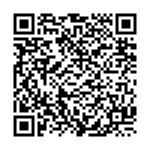Unit 3 Pattern Instruction Sheet, Cutting, and Marking
Unit 3 Pattern Instruction Sheet, Cutting, and Marking
As you begin to unpack these concepts related to the pattern envelope, cutting, and marking, please consider the following pedagogical perspectives.
First Things First
Before you plan a lesson, think about what you can do to meet the needs of all students. Plan lessons, activities, and assignments to reflect all levels of learning, and be flexible enough to go slowly through content that is more difficult to process and understand. Get to know your students and use the results of formative assessments to drive your instructional plans.
Know your Students
See previous chapters for specific ideas on how to get to know your students. Before you plan any lesson, you should always consider the audience. Research and implement resources for students who are exceptional learners and those who are learning English as their second language. All students can learn, but they learn at different rates and in different ways. Allow time for students to build their foundational understandings, recognizing that each student will “pop” at a different moment, and that is okay (Deaton, 2021).

Maslow Before Bloom’s
Remember that we teach students, not standards. We must actively work to ensure our students’ basic physiological needs are being met before they will ever reach their full potential. It’s hard to focus on reading a pattern envelope or cutting a straight line if you are hungry, cold, or feel like you do not belong. Spend time getting to know your students and plan your curriculum accordingly, considering the whole-child approach to education rather than just focusing on the cognitive domain. Students must have their basic needs met before they can dive deeper into cognitive thought processes. For more information about Maslow’s Hierarchy of Needs, check out the resource listed below.
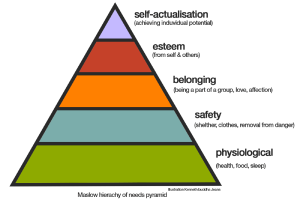
Blooming Bloom’s
Educators have used Bloom’s Taxonomy of verbs to help clarify learner outcomes for decades (Bloom, B.S., Engelhart, M.D., Furst, E.J., Hill, W.H., & Krathwohl, D.R., 1956). In this body of work, six levels are identified regarding the depth of cognitive ability that students would be required to use to accomplish the tasks at hand. Educators are encouraged to use a variety of verbs in their objectives and to teach to multiple levels of taxonomy, diversifying instructional strategies and approaches to meet the needs of all students.
It is important to note that one level of taxonomy is not more important than the others. Students must be able to remember what you have taught them before they will be able to understand, apply, analyze, evaluate, and create. Spend intentional moments crafting a curriculum to meet the needs of all students and ensure that you are hitting all areas of these taxonomies as you progress through your lessons (Deaton, 2021).
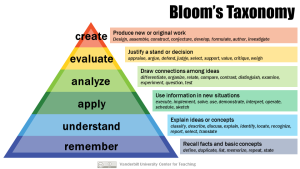
Writing Objectives Using Bloom’s
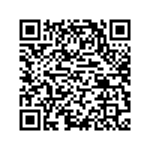
Forming Understanding through Formative Assessments
Teachers who use formative assessment plan this approach to learning. They collect evidence of students’ status and use this to adjust their ongoing instructional procedures (Popham, 2017). Additionally, formative assessment results could be used by students to change their current learning tactics (Popham, 2017). Consider using formative assessments throughout the apparel production course, but especially as you begin to uncover new concepts.
Done well, formative assessments give students feedback on what they have accomplished and give clear direction on how to improve (Shepard, Penuel, & Pellegrino, 2018). As you provide feedback to learners, ensure that your feedback is accurate, clear, selective, and timely based on what ideal performance looks like (Rasmussen, 2018). See the following examples of formative assessments and consider how you might implement these in your course as you teach these concepts.
| KWL | 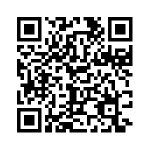 |
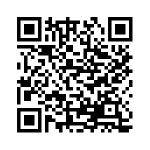 |
Slow and Steady
When introducing new pieces of technology in the classroom, Moore (2015) suggests the following strategies:
- Start Slow
- Keep it Simple.
- Be Selective
- Be Flexible.
- Allow Flexibility in Grouping.
These are all excellent suggestions for educators to consider as they are teaching students about new pieces of technology or apparel production equipment. Some students are going to be eager to learn new techniques and new pieces of technology. Others are going to be apprehensive and concerned. Monitor and adjust to meet the needs of your students. I learned along the way that I would rather do things well than do them in a hurry (Deaton, 2021). Take your time. Allow time for reflection and acquisition of skills. Slowly and steadily, you will make progress!

Pre-Assessment
Use the following drag-and-drop assessment to measure your understanding of pattern symbols before reading the text.
References
Bloom, B.S., Engelhart, M.D., Furst, E.J., Hill, W.H., & Krathwohl, D.R. (Eds.). (1956). Taxonomy of educational objectives: Handbook I. Cognitive domain. New York: David McKay.
Deaton, S. (2021). Teaching Apparel Production. Presentation.
Moore, K. (2015). Effective instructional strategies (4th ed.). SAGE.
Popham, W. (2017). Classroom assessment (8th ed.). Pearson.
Rasmussen, J. (2018). Google Scholar. [online] Scholar.google.com. Available at: https://scholar.google.com/scholar?cluster=3759135366356405812&hl= en&as_sdt=0,4&as_ylo=2017&as_vis=1 [Accessed 16 Nov. 2018].
Shepard, L., Penuel, W., & Pellegrino, J. (2018). Using learning and motivation theories to coherently link formative assessment, grading practices, and large-scale assessment. Educational Measurement: Issues and Practice, 37(1), 21-34. Available at: https://onlinelibrary.wiley.com/doi/pdf/10.1111/emip.12189 [Accessed 15 Oct. 2018].

